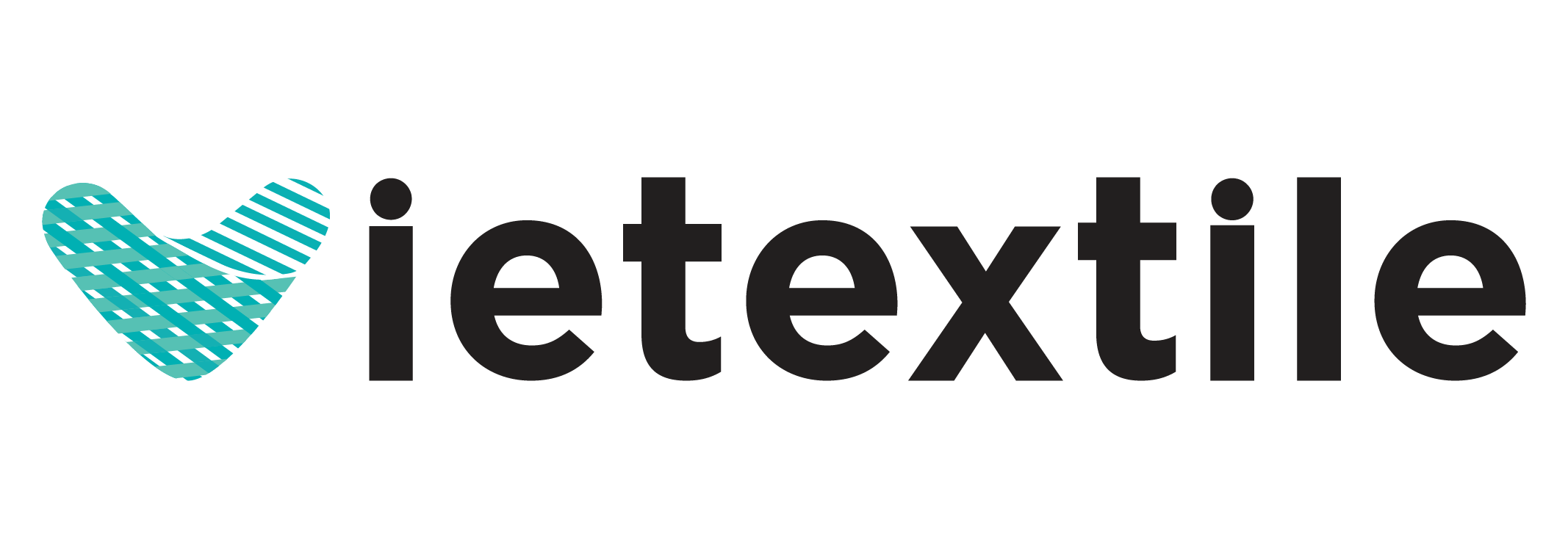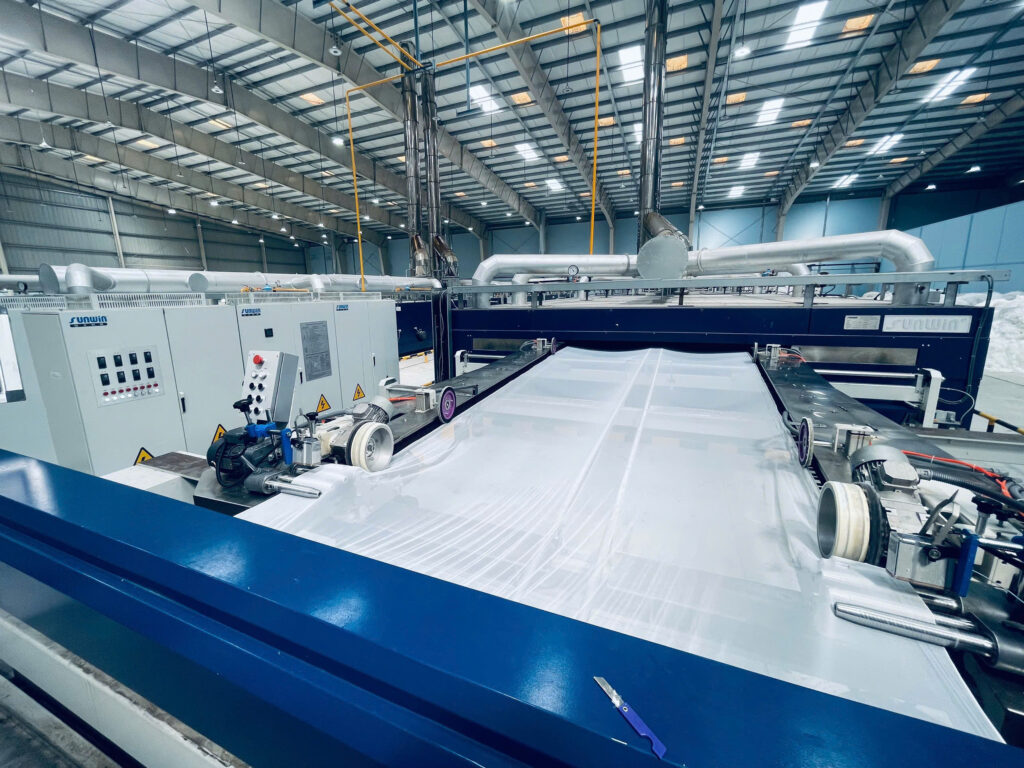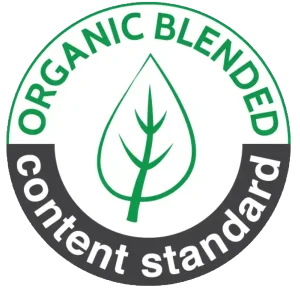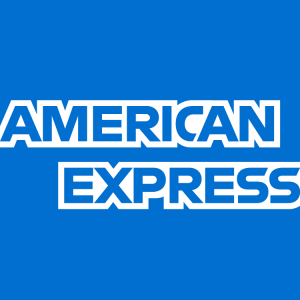In the knitted fabric finishing industry, choosing the right drying and finishing equipment is crucial for ensuring product quality. Between the two common technologies today – the knitted fabric stenter and the conventional thermal dryer – businesses need to clearly understand the differences to make an optimal choice that saves costs while maintaining fabric durability and form.
This article will help you analyze in detail the differences between the two types of machines, from their operating principles and processing efficiency to their energy consumption and ability to control fabric quality.
1. Operating Principles of the Knitted Fabric Stenter and Conventional Dryer
Nội dung tóm tắt
ToggleUnderstanding the operating principle of each machine is a critical foundation for a business to choose the right technology for its production goals. Each piece of equipment – from the knitted fabric stenter to the traditional dryer – operates differently, directly affecting finished product quality, energy saving potential, and long-term maintenance costs.
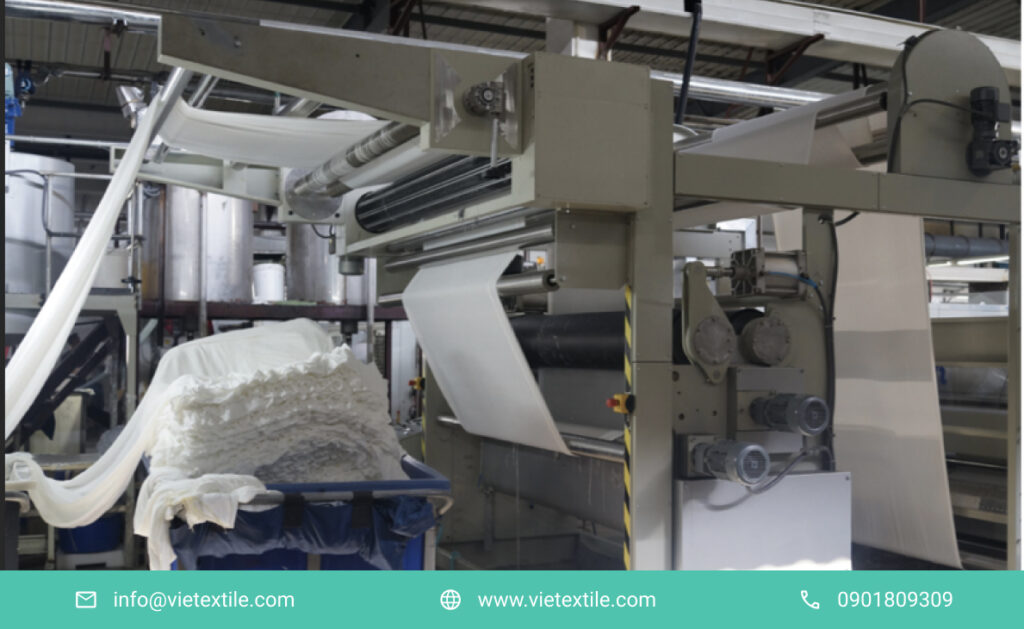
1.1. Operating Principle of the Knitted Fabric Stenter
A knitted fabric stenter operates on a principle that combines thermal drying with stretching the fabric both horizontally and vertically. When the knitted fabric is fed into the machine, clamps secure the fabric edges and stretch it uniformly as it passes through the heating chambers. This allows the fabric fibers to be reoriented and maintain a stable form after the finishing process. The fabric is also gradually cooled at the end of the cycle to set the fiber structure in its standard state. This is a crucial step that helps minimize shrinkage or deformation, which is very common in knitted fabrics.
1.2. Operating Principle of the Conventional Dryer
In contrast, a conventional dryer simply uses a flow of hot air or thermal radiation to dry the fabric surface. The fabric is placed on a conveyor belt or suspended in the drying chamber, with no tension applied and no control over the fiber direction. Because there is no finishing mechanism, knitted fabric after drying is often prone to shrinking, wrinkling, or distorting. This directly affects the quality of the finished product, especially during subsequent garment manufacturing or printing.
2. Comparison of Efficiency and Finished Product Quality
Before diving into the detailed comparison, it’s important to understand that efficiency and finished product quality are two key factors that directly influence the choice of technology. Especially with a knitted fabric stenter, the ability to control shrinkage, maintain fabric form, and ensure uniformity between production batches is a significant advantage over a conventional dryer. The section below will clarify the differences in processing efficiency and quality stability between the two types of machines.
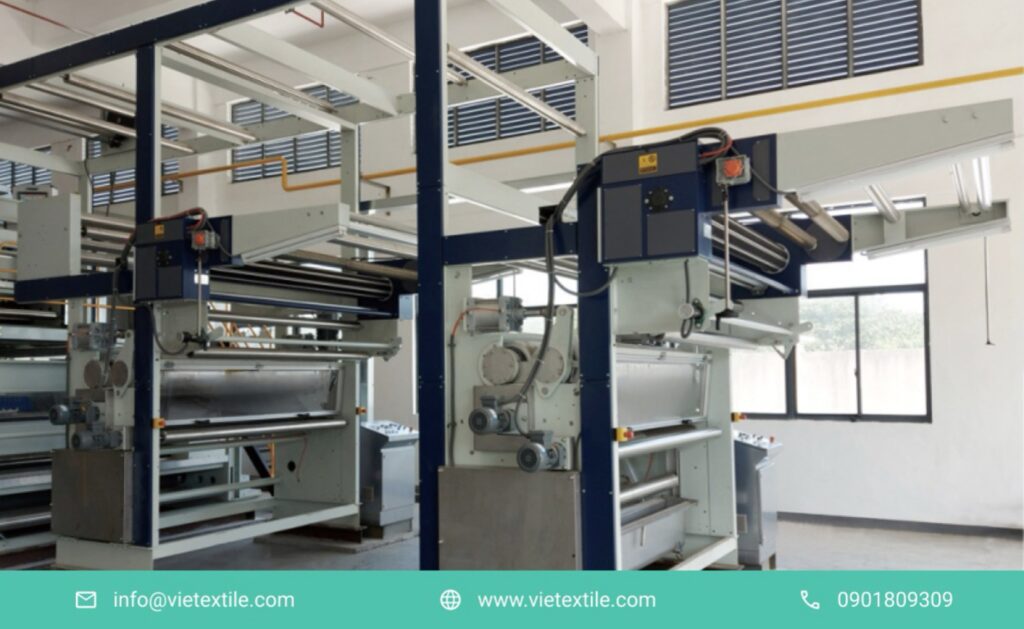
2.1. Knitted Fabric Processing Efficiency
The knitted fabric stenter can process fabric with high uniformity thanks to its sturdy edge clamping system, the ability to control tension, and flexible temperature adjustment for each chamber. As a result, the machine helps prevent selvedge deviation, geometric distortion, and especially shrinkage – a common problem with knitted fabrics. After finishing, the fabric maintains its shape well, has a smooth, wrinkle-free surface, thereby improving the quality of stitching and product durability.
2.2. Finished Product Quality Stability
In comparison, a conventional dryer operates at a higher speed with a simpler process, helping to save drying time. However, due to the high elasticity of knitted fabrics, drying without finishing can easily lead to distorted shapes, shortening, or fabric edge misalignment. The lack of stability between production batches also makes it difficult for businesses to control quality. Therefore, a dryer is only truly suitable for woven fabrics, which have a stable structure and undergo minimal changes after drying.
3. Energy Saving and Operation
Before specifically evaluating energy saving capabilities and operational efficiency, it’s important to understand that long-term operating costs are a top concern for many factories. Especially with equipment like the knitted fabric stenter, energy efficiency and automation capabilities have a major impact on total production costs and output quality. The section below will clarify the differences between the two technologies in practical use.
3.1. Comparison of Energy Consumption Between the Two Technologies
A conventional dryer has the advantage of a simple structure, which results in lower power consumption per operating cycle. This is a suitable choice for small-scale workshops or those that do not have high technical requirements for temperature control. However, with knitted fabrics – a type of fabric that is highly elastic and prone to deformation – the power savings are not enough to offset the costs from product defects.
3.2. Energy Saving and Operation of the Knitted Fabric Stenter
Conversely, while a knitted fabric stenter has higher initial power and gas consumption, it is equipped with heat recovery technology and precise control of each heating chamber. This helps save energy during continuous operation, which is particularly effective for factories that run multiple shifts.
In addition, a knitted fabric stenter also integrates an automatic tension adjustment system and online quality monitoring, which reduces reliance on technical personnel and limits errors from manual operation. Meanwhile, with a conventional dryer, operators must constantly check the fabric, increasing labor pressure and the risk of errors in mass production.
4. Which Machine Should You Choose for Your Factory?
When faced with the choice between the two technologies – a traditional thermal dryer and a knitted fabric stenter – factories need to consider many practical factors such as the fabric type, technical requirements, quality goals, and investment capacity. The section below will help you determine when to choose a stenter and when a conventional dryer is a reasonable and economical solution.
4.1. When to Choose a Knitted Fabric Stenter?
If a business specializes in producing knitted fabrics with high requirements for dimensional accuracy, low shrinkage, and a perfect shape after finishing, a knitted fabric stenter is an almost mandatory solution. Although the initial investment cost may be higher than a conventional dryer, the long-term benefits in both finished product quality and reduced technical errors optimize operating costs. A stenter is also suitable for factories producing goods for export or those that require strict quality control.
4.2. When to Choose a Conventional Dryer?
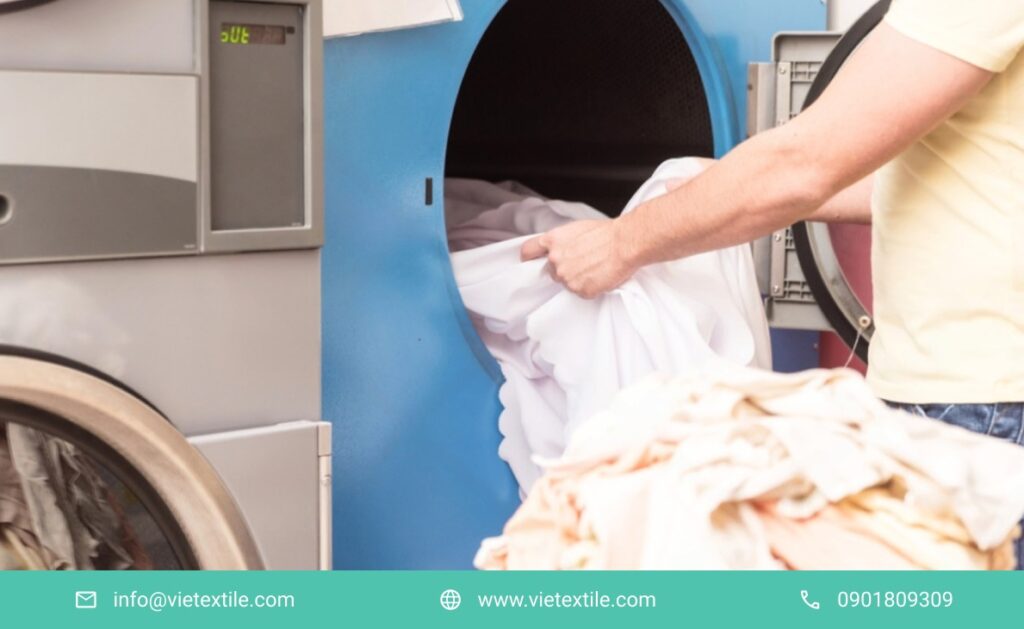
Conversely, if you are producing common woven fabrics with a need for fast drying, large volumes, and do not place a high priority on fabric form, a conventional thermal dryer is an economical choice. This equipment is easy to install, simple to operate, and has low investment and maintenance costs – it is very suitable for small workshops or orders that do not require high technical finishing.
5. Conclusion
Compared to a conventional thermal dryer, a knitted fabric stenter stands out in its ability to maintain a stable fabric shape, reduce shrinkage, and improve the durability and quality of the final product. Stenter technology helps fabric fibers stabilize in their standard state, so subsequent stages such as sewing, printing, or further processing are smoother and more efficient.
However, a conventional thermal dryer still has advantages in its low investment cost, simple operation, and suitability for fabrics with high stability. The choice between these two types of equipment depends on the product orientation, the desired level of technical finishing, and the investment capacity of each factory.
Therefore, carefully considering quality goals, the type of fabric used, and production capacity is a prerequisite for choosing the right knitted fabric stenter or dryer to optimize both investment costs and production efficiency.
6. References & Contact
- Fabric Setting Machine: Improving Durability, Enhancing Fabric Quality
- The Most Effective A-Z Experience Using a Fabric Setting Machine
- The Difference Between Stentering and Conventional Drying – Textile World
- The Effectiveness of Knitted Fabric Setting Technology – Fibre2Fashion
Contact for knitted fabric stenter consultation: Need help choosing a knitted fabric stenter suitable for your workshop’s scale? VieTextile is ready to assist you in choosing the right machine – for the right need – within the right budget!
- Hotline: 0901 809 309
- Email: info@vietextile.com
- Website: https://vietextile.com
